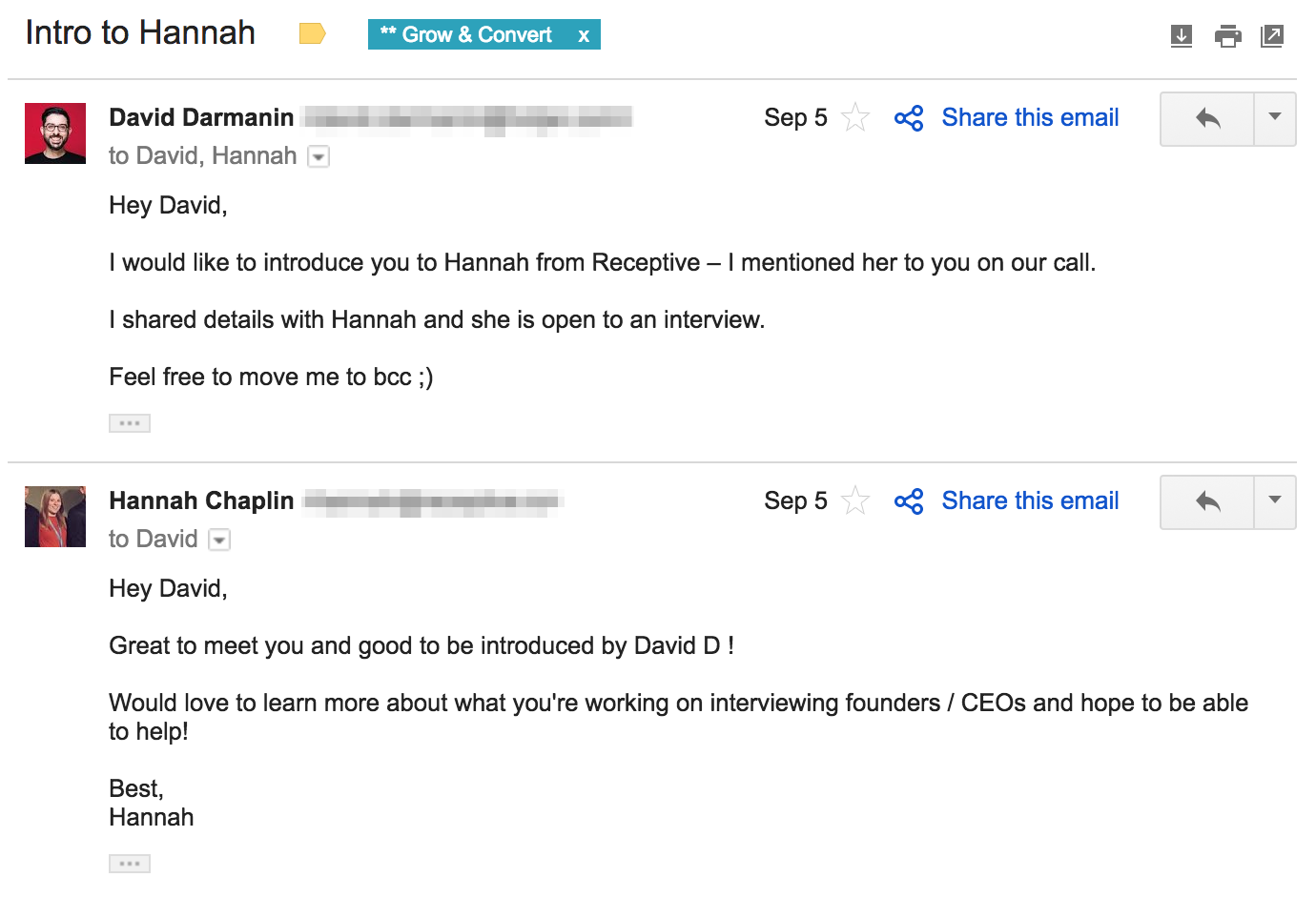From Devesh:
We’ve written previously about how using subject matter experts is essential to producing high-quality blog articles.
Why?
Because unless your customers are truly beginners on a topic, it’s unrealistic to expect a writer, freelancer, or even a marketer to do Google research for a couple of hours and produce a piece that is actually useful or interesting to those that have been knee-deep in their field for years (i.e. your customers).
Yet everyone produces content this way.
As a way around this issue, we use subject matter experts and industry influencers to get the information needed for stories on various topics.
But since we’ve first discussed our process, we keep getting asked this question: how do you consistently source subject matter experts and get them to agree to spend their time being interviewed?
To help answer that, here is a case study by one of our content strategists, David Peralta, on how he’s been able to land interviews with 60% of the experts he’s reached out to.
Here’s Dave….
When I first started out as a content marketer, I was terrified of doing influencer outreach.
I knew it would be a great way to drive traffic and recognition to our blog, but I was always too scared that they would say no. I was anxious that they’d say they were too busy or that our blog would be too small for it to be worth their effort.
Basically, I let my fear of rejection get in the way of even trying to reach out.
So I never did.
But once I saw how easily Benji landed an interview with Rand Fishkin with just a tweet, I realized I had nothing to lose.
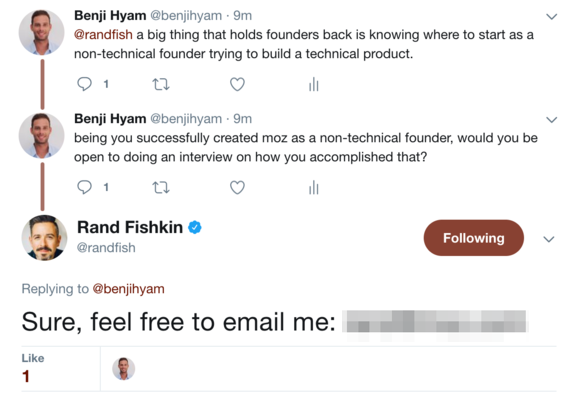
So I started reaching out and within 3 days I began landing interviews with founders and CEOs of successful startups.
And guess what? They were all more than happy to take an hour of their time to share their knowledge.
After a little polishing, I’ve developed a simple, 7-step outreach process that’s gotten me a 60% positive response rate from the experts I reach out to.
Here’s the entire process from start to finish:
Step 1: Understanding my target audience’s pain points (to decide who to interview)
Before I start my outreach, I have to make sure I understand who my target audience is. That may sound obvious, but unfortunately a lot of content marketers fail to do this step right.
Benji and Devesh have done a great job of outlining how to figure out who you are writing for, so I won’t go into detail here.
Once I know my audience and their pain points, I can start to figure out who it is that they would want to learn from.
Usually it’s pretty straightforward. Your target audience wants to learn from people who have overcome the same challenges they are currently facing. In other words, a more successful version of themselves.
So when our client Codementor.io wanted to attract founders and CEOs from seed stage startups, the natural place to look was to founders and CEOs of more successful startups that had made it past their Series A round (or were succeeding without any venture capital at all).
After making a list of 134 well-known startups, I whittled that down to 10-15 companies that I was more interested in learning about. I figured that the more interested I was in learning about the company, the better the final piece would be.
I listed the founders I would be reaching to in a simple spreadsheet like this one, and started hunting for their contact info.

Step 1a: I find their contact info
I do my outreach mostly via Twitter and email, so that’s what I’m interested in finding.
For Twitter, I just google the expert’s name + Twitter (same for LinkedIn).
For email, I use a combination of Voila Norbert and Email Hunter. These two tools get me 90-95% of the email’s I’m looking for.
Once I know who I want to reach out to, I have to find a topic that will spark their interest.
Note: This is the most critical step, if you read nothing else, read this, it is essentially the answer to “How do you get experts to agree to be interviewed?”.
Step 2: I find a unique angle that would spark their interest (and make for a great story)
Finding a unique angle is important because it help to:
- Get their interest in the first place
- Create a truly interesting piece that will stand out in a sea of beginner level fluff content
It’s not as complicated as it might sound, and can be done in as little as 5 minutes.
The way I do it is just by googling the expert’s company for existing stories, then looking for interesting details that stand out to me but aren’t the focus of the main story.
For example, when I was researching Amplitude Analytics, I googled techcrunch.com (a well known startup news site) + Amplitude, and opened up the first few pieces I found.
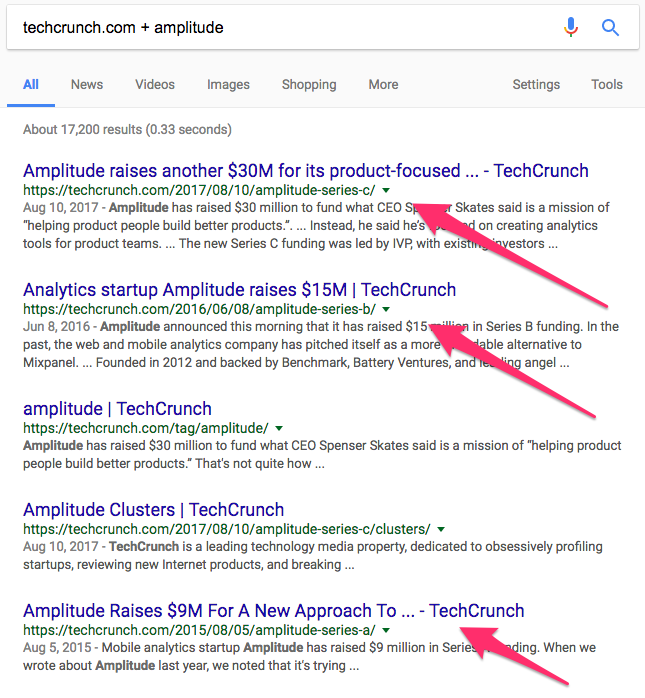
Right away, I found out that they had some crazy-talented engineers on their team, but the article didn’t go into any more detail:

Knowing our client’s audience, I knew that learning more about how Amplitude built a top-tier engineering team would resonate. And because there wasn’t anything out there about how they did it, I knew I had found my unique angle and was ready to reach out.
Now the main question we get is “So what’s in it for the expert? Why would they respond?” Our best answer is that they agree because of two reasons:
- They actually like sharing their advice and experience, if it’s done in a unique and interesting way.
- They also get some publicity for their company and a link to their site, plus they get build to their brand a little more. After all, their target audience should be similar if not the same to yours.
Finding this unique, super-specific angle is a critical part of fulfilling these reasons and giving us credibility. For example, from the Amplitude founders’ perspective:
- They feel the angle is unique so they don’t just say “yeah, I talked about that already a million times.”
- They get to shine a very positive light on their company and employees
- They have confidence the interview will be solid since we clearly did research and approached them an angle that sparks their interest
Step 3: First, I reach out via Twitter
Twitter is great for outreach. People tend to respond quickly, and it doesn’t require much effort.
I start by checking to see if the person is active on Twitter. If they are posting regularly once a day or every few days, then Twitter is the right place to start. If they are posting once a week or less, I move on to the next step.
Just go to their profile, click the “Tweet to” button, and send them a message that includes your unique angle. If you need more than one tweet, make sure to “reply” to your first tweet so that they see your second one as well. That’s how I landed an interview with David Darmanin, the founder and CEO of Hotjar: This article ended up being published on our client Codementor’s blog and led to over 6,800 pageviews in less than two weeks. Interested in learning how we got so much traffic so quickly? Read our article on community content promotion. If they don’t respond on Twitter (or if they aren’t active to begin with), then I wait 3-4 days and move on to email or LinkedIn. Personally, I prefer email because it’s easier to track. But Benji has had success using LinkedIn’s InMail, so it’s up to you. Either way, the process is more or less the same. Here’s an example of a typical outreach I email that I send out: I lead with the unique angle I found, and mention any interviews, articles, or podcasts of theirs that I found. Other key elements I include are: That’s it. If the expert doesn’t open the email at all (I use Mixmax to track opens), I send it again after 3-4 days using a new subject line. I tend to alternate between two subject lines: I know their inbox is probably pretty full, so it doesn’t hurt to give them a second chance to see your email. (This was how I got the CEO of Buffer to open up my email. He missed it the first time, but opened the 2nd one). If they did open your initial email but haven’t responded, I usually wait 4-5 days and send a polite “I’m sure you’ve got a lot on your plate…” reminder email. That’s how I landed an interview with Asana’s Head of Customer Journey for this in-depth piece. I started by reaching out to their Head of Product Management. I sent her a follow up a few days after she opened the first email (but didn’t reply). She ended up recommending Michael Nguyen from Asana who ended up being the perfect person to interview: This article ended up getting over 3,400 pageviews in just under 4 weeks. If after all these steps I still haven’t gotten a response, I don’t give up. I figure if they’re not open to a complete stranger asking them for an interview, they might be open if someone inside their company asks them instead. How? Easy. I just reach out to the content marketer on their team (or the head of publicity or PR), and ask them to set up the interview. I know they’ve got an interest in getting the word out about their company, so it’s a good bet that they’ll be willing to help (again, if the angle is right). That’s how I ended up landing the interview with the CEO and CTO of Amplitude Analytics for this piece. After not hearing back from the CEO, I reached out to Amplitude’s Content Marketing Manager. My email tracker showed me that the email had been forwarded and opened 35 times in 3 days, so I knew they were interested. I followed up a few days later and landed the interview: This piece resulted to more than 2,300 pageviews in just 2 weeks. Of course, it’s even better if you can land an interview without all the heavy lifting. Here are two more methods that are worth exploring: If someone in your network knows an expert, that’s the first place to start. That’s how we landed an interview with David Cancel, the CEO of Drift. I had him on my outreach list, and it turned out that Benji knew Drift’s Director of Marketing David Gerhardt (even though Benji got his title wrong below). After I finish an interview with an expert, I ask them if they know of anyone who would be open for an interview. If they say yes, they typically will be happy to make a warm introduction to the new expert. That’s how I landed an with the CEO of Receptive.io for this piece: That’s the crux of the process. Remember, it all hinges on Step 2: finding a unique angle. Without that your pitch will be generic and they are far less likely to agree. And even if you do land the interview, without a unique angle your story will be generic and less likely to be produce good results. Do you guys have any outreach techniques that have worked for you? Let me know in the comments below. Like this article? We produce stories like these for our clients, learn more here.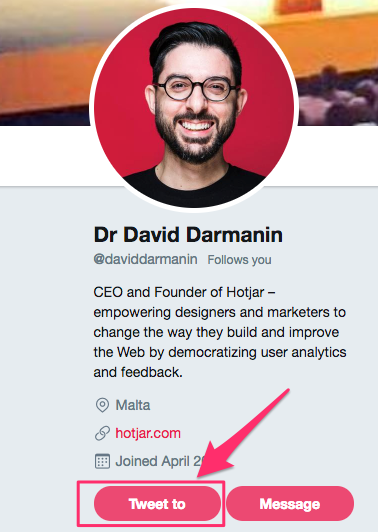

Step 4: I reach out via Email (or LinkedIn)
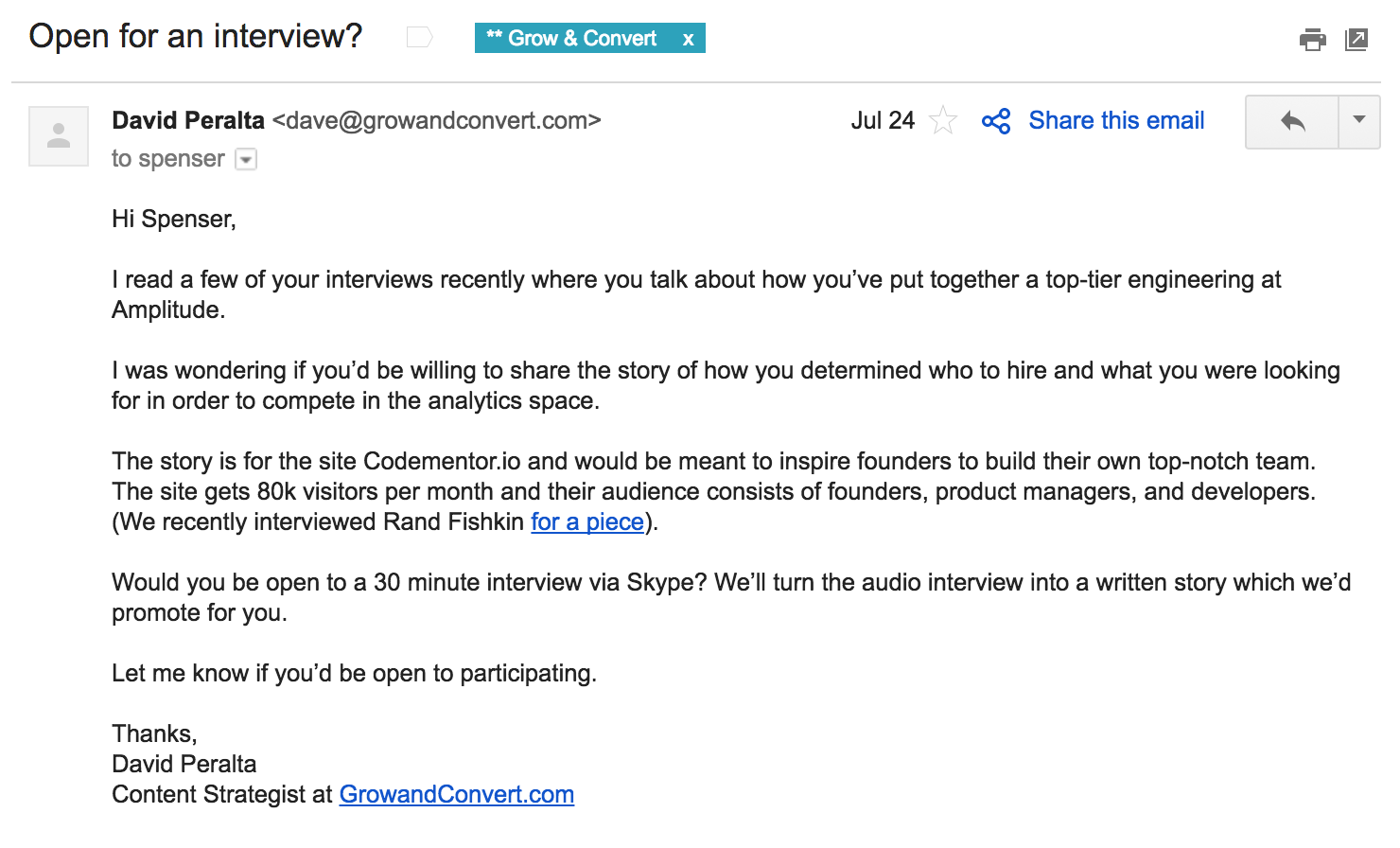
Step 5: The “No-Open” Follow Up
Step 6: The “They-opened-but-didn’t-reply” Follow Up
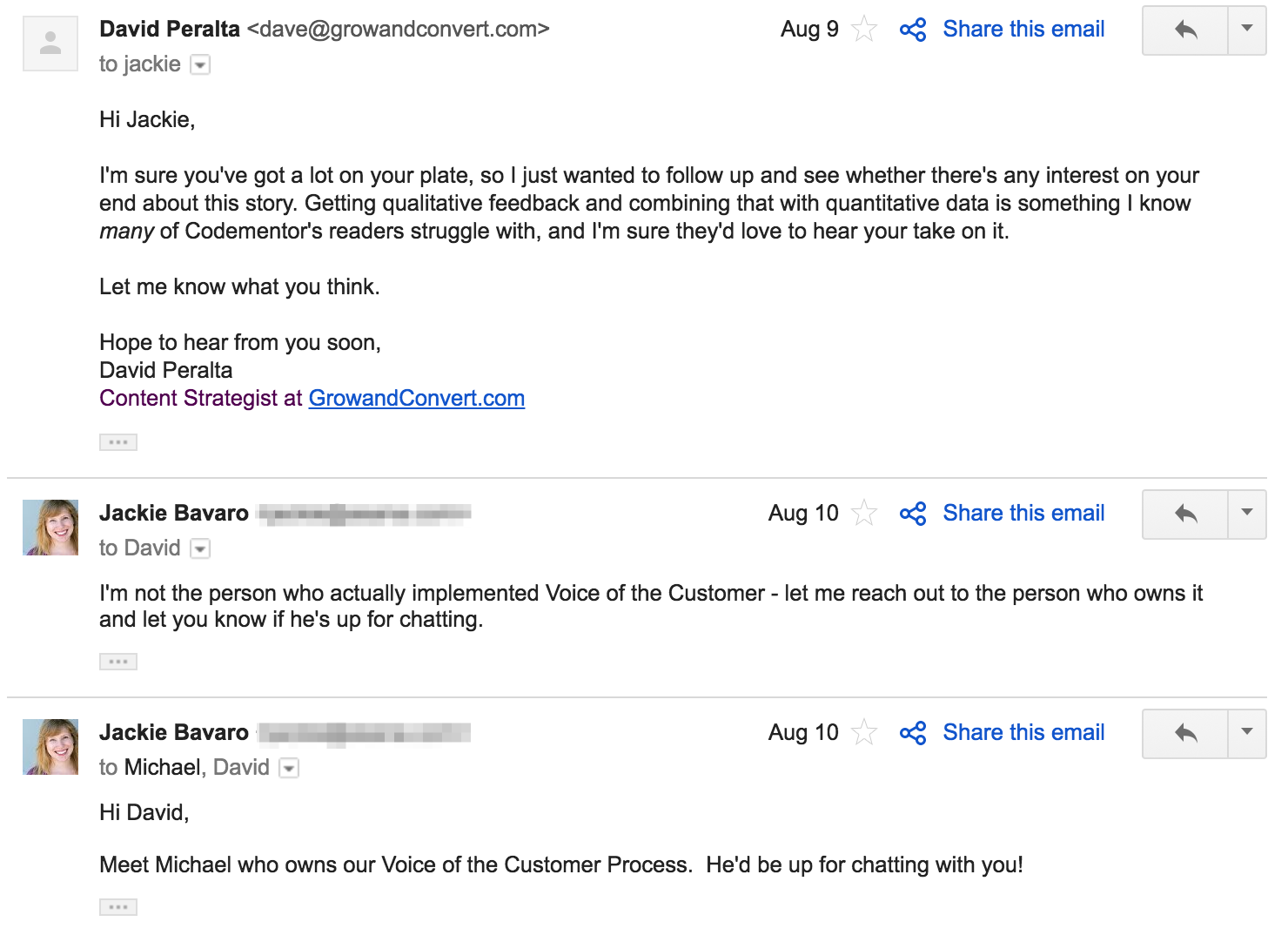
Step 7: I get an insider to set up the interview

Additional Sources for Landing Interviews
Your Network

![]()
Referrals
